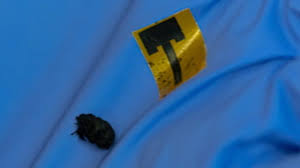
Breaking News
 $26M Frozen on Blockchain - With One Click
$26M Frozen on Blockchain - With One Click
 Italy are on national strike shutdown rejecting digital enslavement...
Italy are on national strike shutdown rejecting digital enslavement...
 The following U.S. states are currently using the rebranded "Reporty Homeland Security" so
The following U.S. states are currently using the rebranded "Reporty Homeland Security" so
 NATO Chief Urges Europe To Prepare For Long-Term World War With Russia, China, Iran & North Korea
NATO Chief Urges Europe To Prepare For Long-Term World War With Russia, China, Iran & North Korea
Top Tech News
 HUGE 32kWh LiFePO4 DIY Battery w/ 628Ah Cells! 90 Minute Build
HUGE 32kWh LiFePO4 DIY Battery w/ 628Ah Cells! 90 Minute Build
 What Has Bitcoin Become 17 Years After Satoshi Nakamoto Published The Whitepaper?
What Has Bitcoin Become 17 Years After Satoshi Nakamoto Published The Whitepaper?
 Japan just injected artificial blood into a human. No blood type needed. No refrigeration.
Japan just injected artificial blood into a human. No blood type needed. No refrigeration.
 The 6 Best LLM Tools To Run Models Locally
The 6 Best LLM Tools To Run Models Locally
 Testing My First Sodium-Ion Solar Battery
Testing My First Sodium-Ion Solar Battery
 A man once paralyzed from the waist down now stands on his own, not with machines or wires,...
A man once paralyzed from the waist down now stands on his own, not with machines or wires,...
 Review: Thumb-sized thermal camera turns your phone into a smart tool
Review: Thumb-sized thermal camera turns your phone into a smart tool
 Army To Bring Nuclear Microreactors To Its Bases By 2028
Army To Bring Nuclear Microreactors To Its Bases By 2028
 Nissan Says It's On Track For Solid-State Batteries That Double EV Range By 2028
Nissan Says It's On Track For Solid-State Batteries That Double EV Range By 2028
Carbon Nanotube Thin Film Patch Antennas Viable for 5G, Drones, Sensors and IOT

The new antennas could be suitable for 5G networks but also for aircraft, especially unmanned aerial vehicles, for which weight is a consideration; as wireless telemetry portals for downhole oil and gas exploration; and for future "internet of things" applications.
The Rice lab of chemical and biomolecular engineer Matteo Pasquali tested antennas made of "shear-aligned" nanotube films. The researchers discovered that not only were the conductive films able to match the performance of commonly used copper films, they could also be made thinner to better handle higher frequencies.
At the target frequencies of 5, 10 and 14 gigahertz, the antennas easily held their own with their metal counterparts, he said. "We were going up to frequencies that aren't even used in Wi-Fi and Bluetooth networks today, but will be used in the upcoming 5G generation of antennas," he said.
recent improvements in fluid phase CNT processing have yielded macroscopic CNT materials with better alignment and conductivity that can match copper. Early work on carbon nanotube (CNT) antennas indicated that their performance could not match that of metals such as copper. There is currently a gap in the literature on CNT antennas for direct experimental measurements of radiation efficiency. In this study, we conducted radiation efficiency measurements of microstrip patch antennas made of shear-aligned CNT films.

 Carbon based computers that run on iron
Carbon based computers that run on iron

